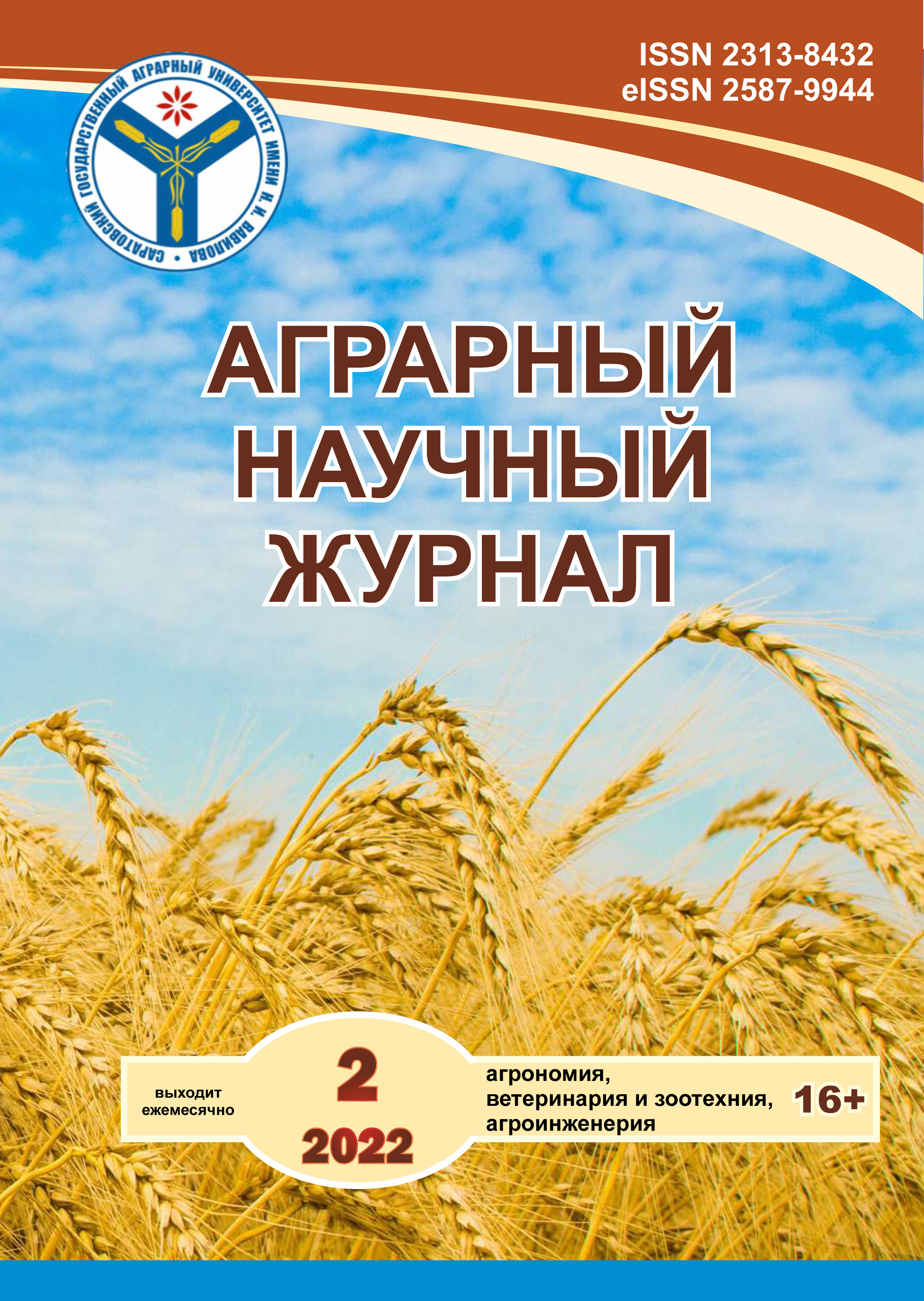Influence of growth conditions on productivity of Echinacea purpurea in the year of sowing
DOI:
https://doi.org/10.28983/asj.y2022i2pp18-21Keywords:
Echinacea purpurea, weed vegetation, herbicides, field germination, safety, yield, raw materialAbstract
Despite the great success in the creation of chemical drugs, the popularity of herbal medicine is increasing. Medicinal plants, including Echinacea purpurea, occupy a special place among natural sources of raw materials. An efficient place for the cultivation is the Middle Volga region. Since Echinacea has been cultivated recently, it has specific properties of wild species that could seriously influence on the process of cultivation. It could be observed in seed germination and during a long period from sowing to seedlings, which leads to an increase in weediness. In this regard, the purpose of the current research is to develop technological methods for the cultivation of Echinacea purpurea in the year of sowing, providing the greatest realization of the potential in conditions of unstable moisture. According to the results of the research carried out in 2014 – 2017 on the chernozem meadow soil on the experimental plot of Penza State Agrarian University, it was found that during the winter sowing of the crop (October 20 ... 30), the highest germination rate of 57.6% was noted, the number of plants was 115 pcs/m2. At the early spring sowing carried out at the end of April, it decreased by 4.8%. As a result of competition between themselves and the weed component, the number of surviving plants by autumn decreased to 97.7...106.9 pcs/m2. The highest green mass yield of 10.2 t/ha was obtained on winter sowing with three manual weed removal and pre-emergence application of Lazurit SP herbicide (0.5 kg/ha) followed by the application of Miura (0.6 l/ha) in phase 2-4 weed leaves.
Downloads
References
Доспехов Б.А. Методика полевого опыта. М.. 1985. 351 с.
Никольская Е.О. Формирование продуктивности эхинацеи пурпурной в зависимости от использования микробиологического удобрения Байкал ЭМ-1 // Вестник Саратовского госагроуниверситета им. Н.И. Вавилова. 2008. №4. С.33-35.
Сидельников Н.И., Бушковская Л.М., Пушкина Г.П. Особенности защиты лекарственных культур от вредных организмов // Защита и карантин растений. 2014. №11. С. 20-22.
Солодовников, А.П., Косачев А.М., Степанов Д.С., Даулетов М.А. Засоренность посевов чечевицы на фоне минимализации обработки почвы и применения гербицида в Поволжье // Вестник Саратовского госагроуниверситета им. Н. И. Вавилова. 2014. №. 6. С. 32-34.
Якимович Е.А. Снижение засоренности многолетних плантаций пустырника пятилопастного // Защита растений. 2019. №43. С. 135-143.
Abbasi B. H., Liu C.-Z., Saxena P. K., Murch S. J. Echinacea biotechnology: challenges and opportunities. // In vitro cellular and developmental biology - plant. 2007. 43. 6. 481-492.
Bauer R., Wagner H. Echinacea. Handbuch f?r Arzte Apotheker und andere Naturwissenschaftler. Stuttgart: Wiss. Velg. Ges.,. 1990. 182 S.
Bewley J. D., Bradford K. J., Hilhorst H. W. M., Nonogaki H. Seeds: physiology of development, germination and dormancy. // Edition 3 Springer New York. 2012. 392 p.
Gushchina V.A., Nikolskaya E.O., Lobanova N.Yu. Change in indicators of photosynthetic activity of echinacea purpurea seedings in the second year of life. // Plant Archives. 2021. V. 21. N. 1. P. 467-472.
Miller S.C. Echinacea: The genus Echinacea. CRC PRESS. 2004. 280 p.
Downloads
Published
Issue
Section
License
Copyright (c) 2022 The Agrarian Scientific Journal

This work is licensed under a Creative Commons Attribution-NonCommercial 4.0 International License.








